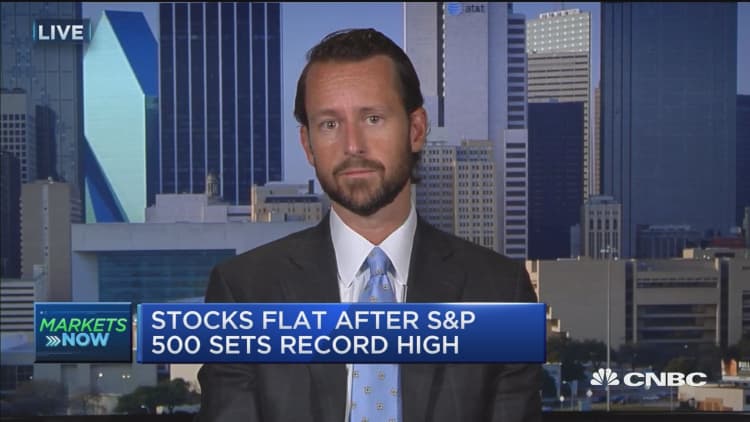The market's closely watched "fear index" is at a one-year low, but it may not be heralding the kind of market sell-off it has in the past.
When the CBOE's Volatility Index, or VIX, fell to a low of 11 last summer in a signal of complacency, the market was jolted by China's sudden currency devaluation. That sent the S&P 500 spiraling lower, in a more than 12 percent correction.
"I'm not so sure this August will be a repeat of last year," said Daniel Deming, managing director at KKM Financial. He said one reason is the lack of over-optimism as the S&P 500 has risen this year to record highs, even with political uncertainty. High levels of optimism often indicate a market top.

Analysts also said two strong jobs reports and easy monetary policy around the world provide fundamental support for stocks. The June and July employment reports sent the S&P 500 to record highs and the benchmark index hit a fresh all-time intraday high of 2,185.54 Monday morning.
The VIX measures the relative levels of put and call buying in the S&P 500 near-term options and is considered the best gauge of fear in the market. It fell to 11.18 Friday for its lowest since Aug. 5, 2015, when it touched 10.88. That was just a week before the surprise devaluation in the Chinese yuan that triggered a sell-off in stocks.
Quincy Krosby, market strategist at Prudential Financial, pointed out that last August, "most of the market was in a bear market. It didn't take much to grab what was still working in the market."
Last August 7, half the sectors were more than 7 percent below their 52-week intraday highs with energy in a bear market and materials and utilities in correction, or more than 10 percent below their 52-week intraday highs. The small-cap Russell 2000, which is watched as a leading indicator for broader market moves, was nearly 7 percent below its 52-week intraday high.
The Russell on Monday hit a fresh 52-week intraday high of 1,235.78 and closed Friday at its highest for the year so far. The VIX was a touch above Friday's levels and near 11.6 late Monday morning.
Financials climbed 1.9 percent Friday to lead the S&P 500 to a record close. The sector had lagged as the only one in the red for 2016, but Friday's gains took financials positive for 2016. All 10 S&P 500 sectors were within 6 percent of their 52-week intraday highs Monday.
"The market today has more breadth … and now the market again is stronger in terms of the internals," Krosby said.
To be sure, the concern is a low VIX points to a complacent market that could easily be shocked, especially in a seasonally weak period. Since World War II, one-third of all monthly declines of at least 5 percent in the S&P 500 occurred in August and September, according to S&P Global Market Intelligence.
Deming also noted that VIX futures for September and October point to levels above 15 and 17, indicating "some anticipation that [volatility] at some point is going to pick up in the next two months."
But for August, the VIX futures contract was below 13 intraday Monday.


